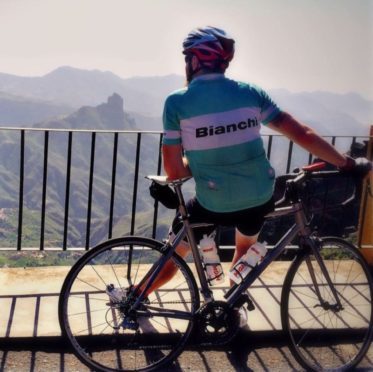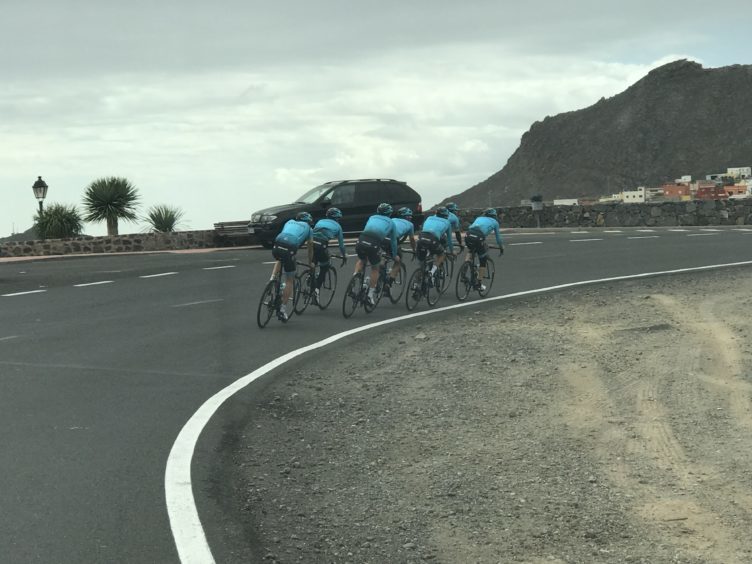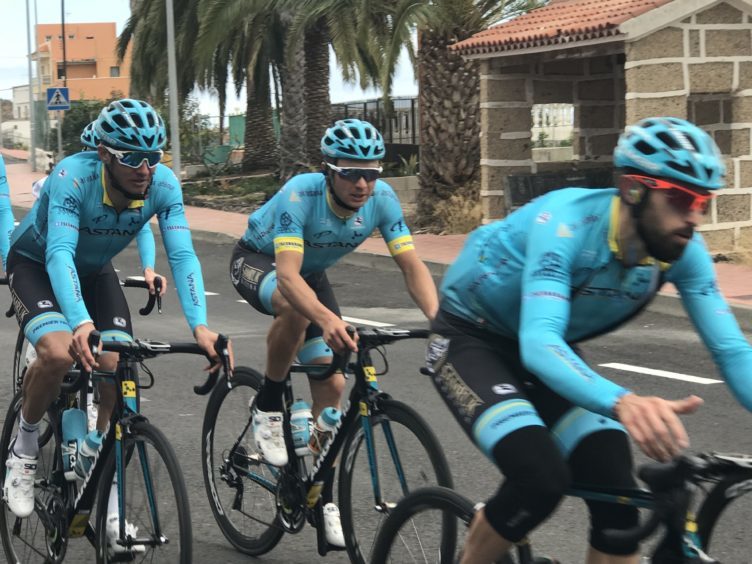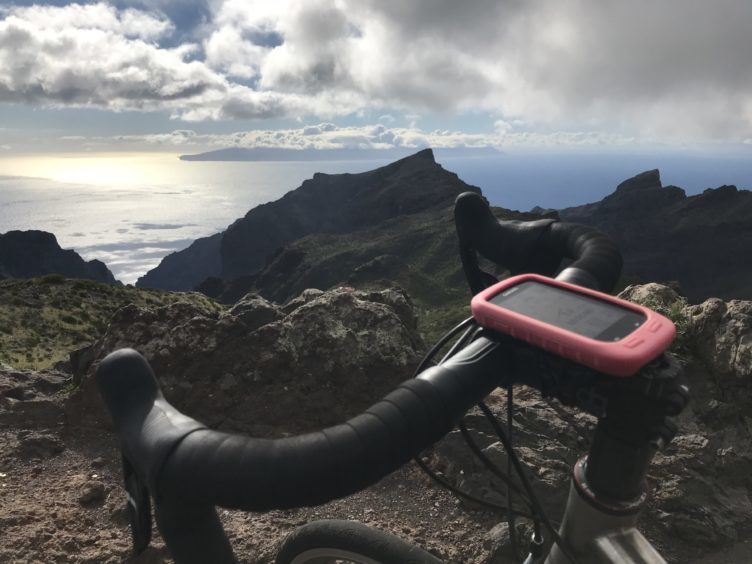I was lucky enough to spend the last five weeks guiding cyclists in Gran Canaria and Tenerife. Before you get too jealous, the Canary Islands were experiencing some of their worst weather in years with high winds, torrential rain and enough snow to block roads. It got to the point where I was looking forward to coming home and getting some decent weather – I arrived in Scotland just in time for the Beast from the East to make its appearance.
Anyway, I am getting sidetracked; the weather is not the subject of this week’s column. The Canary Islands are a popular haunt for pro-cyclists looking for some winter sunshine to train in with hotels like the Parador drawing numerous professional teams for winter training camps. The Parador is situated in the crater of the dormant volcano of El Teide and at an altitude of over 2000m. El Teide itself is the highest summit in Spain and reaches 3718m in altitude, so it’s no wonder that it does snow there from time to time.
During my time there, pro-spotting became a regular feature with Chris Froome and Geraint Thomas from Team Sky being regulars giving us a friendly wave as they cycled past, and Astana were another big pro team out on the road at the same time as us.
It got me thinking about other sports and how often fans and amateurs get a chance to see and meet their heroes while out training. Most individual sports people and teams will have venues where they regularly train. More often than not these venues are behind closed doors leaving fans little opportunity to see them. For cyclists the venues are the big amphitheatres of the mountains and the roads around Europe. I’ve seen riders such as Laurent Jalabert and Richard Virenque in the 1990s to Chris Froome and Vincenzo Nibali recently, all of them out training and all happy to smile and wave as I gave them a friendly shout of “Allez! Allez!”.
Watching these riders train and ride also highlights how good they are compared to mere mortals such as myself. In Tenerife, I saw one young rider from the Bahrain-Merida team riding intervals, on the short, but incredibly steep climb out from Masca to Santiago. In the time it took me to ride up once he had been up to the top, back down and managed to pass me again before I reached the summit. I looked like a sweat-soaked rag, drooped over my handlebars while he sauntered past looking like he was on a wee recovery spin.
On another occasion, I saw six riders from Team Sky descending speed down the 30km descent to Orotava. Their formation was a sight to behold; they were tightly packed in a two-up line, with wheels, front and back only centimetres from their team-mates. Maintaining such a tightly packed bunch on the descent must have taken an enormous amount of skill and concentration, but they rode past with a friendly hello and then continued chatting among themselves.
Road cycling is often seen as a sport that doesn’t require a huge amount of technical skill, as opposed to, say, tennis or football, or even mountain biking. Fitness is considered more of a determining factor of success, and that is true to a point, but being in fine fettle will only take you so far. T
echnique plays a huge part of road cycling – the pros are paid to practice and make it look easy, but amateurs can watch and learn. Looking at how a professional rider holds himself on the bike, watching how they pedal fluidly and how they move their weight around a bike on a descent and then practising to replicate that in your own riding will reap benefits and make your riding more enjoyable. You may even be mistaken for a pro next time you are out riding in Tenerife with your Team Sky replica kit on.
Join the Blazing Saddles Strava Club at: www.strava.com/clubs/BlazingSaddlesWeekendCourier
Where to ride? Tenerife
Description: Tenerife is a popular winter training haunt for amateur and professional cyclists alike. Despite my experience of unusually bad weather last month the Canadian Island normally has a fantastic climate with temperatures averaging around 18 degrees Celcius in January and February, but often getting hotter than that. The main draw for cyclists to Tenerife is the long climbs to the summit crater below El Teide. There are numerous routes up to the top of the island and a large number of the roads have recently been resurfaced, leaving butter-smooth tarmac and a road cycling paradise.













